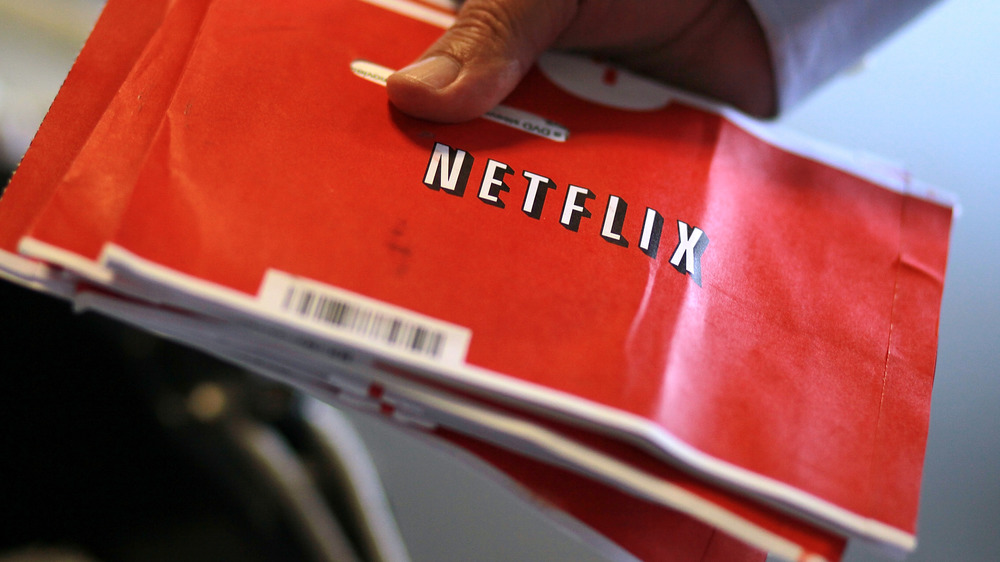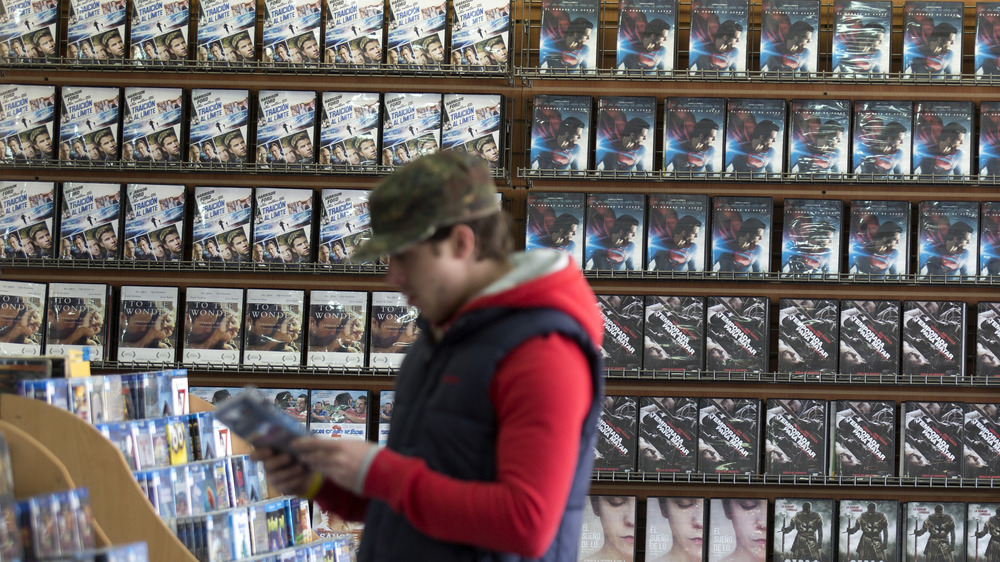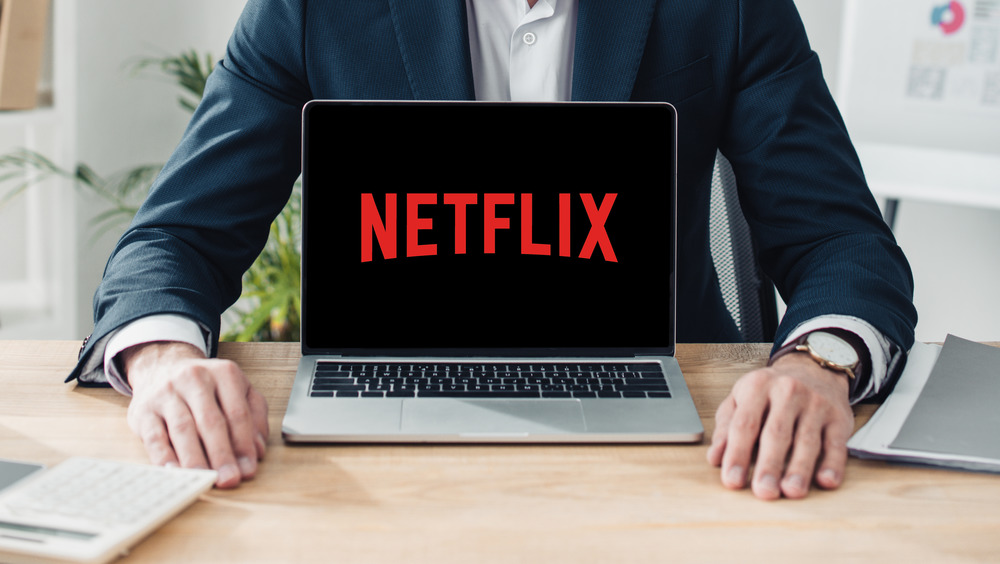What It Was Really Like To Subscribe To Netflix In The '90s
Netflix: You love it, we love it, the world just might stop spinning on its axis without it. Streaming is far and away the preferred method of content consumption for the majority of the world today, and when it comes to premium content created by the heavy hitters of the entertainment industry, Netflix is the king of them all — the most popular among consumers by a wide margin (via Tech Republic). The streamer boasts far north of 200 million subscribers; we can't really give you an exact figure, because by the time you finish reading this sentence, it will have jumped up by thousands of users. But it's safe to say that it's a cultural phenomenon, and its clout in securing deals to get awesome licensed movies and TV series in front of our faces is only matched — if not exceeded — by its ability to lock up the best creatives in the industry to keep pumping out its own vaunted "Netflix Originals."
Netflix has arguably been the single most influential force in the entertainment industry over the last couple decades, and since you're reading this, we're guessing you may not have known just how long it's been around. The company was co-founded in 1997 by former software company CEO Reed Hastings and his employee Marc Randolph, although Hastings' account of the specifics changes more often than the Joker's origin story. If that was before your time, we know what you may be thinking: Did streaming even exist back then? Was the internet robust enough to handle streamed video? The answers to those questions are "no" and "no," and in its initial incarnation, Netflix's business model — and the space in which it was competing — were entirely different from today. In the early days, you see, the "Net" part of the equation referred only to the browsing and selection of titles; in order to actually watch the movies, you had to check the mail.
Netflix in 1997 was like a video store with more convenience
Hastings and Randolph conceived Netflix as essentially a niche competitor for video rental stores, which are things that used to exist. Back in the nineties, you could find a Blockbuster, Hollywood Video, or Movie Gallery store (if not all three) in every major town in the U.S., and most of the smaller ones. In these stores, customers could browse rack upon towering rack of titles on DVD (and, before that, VHS tapes); they would pay a nominal fee to rent titles for a day or two, then cart them back to the store. If they were late, the store would charge you a "late fee." These fees were the absolute bane of movie fans of decades past.
Netflix began offering its service on April 14,1998, and it operated pretty much the exact same way, but by mail (via Funding Universe). Make no mistake, this service was on the bleeding edge of video rental; DVDs had just been introduced the year prior, and the format hadn't even caught on with the bulk of American consumers yet. At launch, Netflix carried 925 titles on DVD, which was pretty much all of the movies available in the format at that time. For four bucks, plus two dollars shipping, you could get a seven-day rental of any of these fabulous titles, with discounts given for multiple rentals on the same order. The discs would arrive in a sturdy, reusable envelope, which you would ship them back in after you were finished watching. Just like video stores, you'd be charged a late fee if you failed to return a disc on time. If you wanted to keep one, no problem — Netflix would simply charge your card the amount of the disc's retail price.
Netflix didn't offer a streaming service for almost a decade
In 1999, Netflix deployed the first major shift in its business model: It began offering unlimited rentals, which you could keep for as long as you wanted with no late charges, for a flat, monthly subscription fee. This shook up the video rental industry; the biggest chain, Blockbuster, immediately began experimenting with the same type of service in its brick-and-mortar stores (via Wired). Nevertheless, the video rental juggernaut viewed the upstart mail-order service not as... something less than an existential threat (which, of course, it turned out to be). In 2000, despite fairly robust growth in subscribers, Netflix's losses totaled $57 million; that same year, Hastings and Randolph offered to sell Netflix to Blockbuster — then raking in $6 billion annually — for $50 million. Blockbuster flatly declined (via Marketplace).
As DVDs began to take off among the public, Netflix continued to diligently grow its subscriber base, and it wasn't until 2007 — nine years after introducing its service — that the company began streaming some of its titles online for its subscribers. At that time, your only option for doing so was on a computer — but that same year, the smartphone was dropped on the world. And as that technology (along with other streaming-capable devices like tablets and smart TVs) began to flourish, Netflix adapted, making its service available on each new platform that came along. In the wake of that seismic shift, streamers like Hulu, Amazon Prime Video, and Disney+ have all jumped into the fray, and the video store has gone the way of the dinosaur; by way of illustration, only one lonely Blockbuster store, in Bend, Oregon, remains, and it probably makes more money from offering its space as an AirBnB than from actual rentals (via IndieWire).
From 925 movies to an incredibly deep library of original series and movies that compete directly with the major Hollywood studios, Netflix's rise to dominance has been perhaps the single most significant development in the entire world of entertainment — and it sure seems like it will continue to dominate, at least until some other upstart company figures out how to beam movies directly into our brains. If you're totally old-school, though, you may be wondering: Can I still rent DVDs from Netflix by mail? Yes, yes you can.


